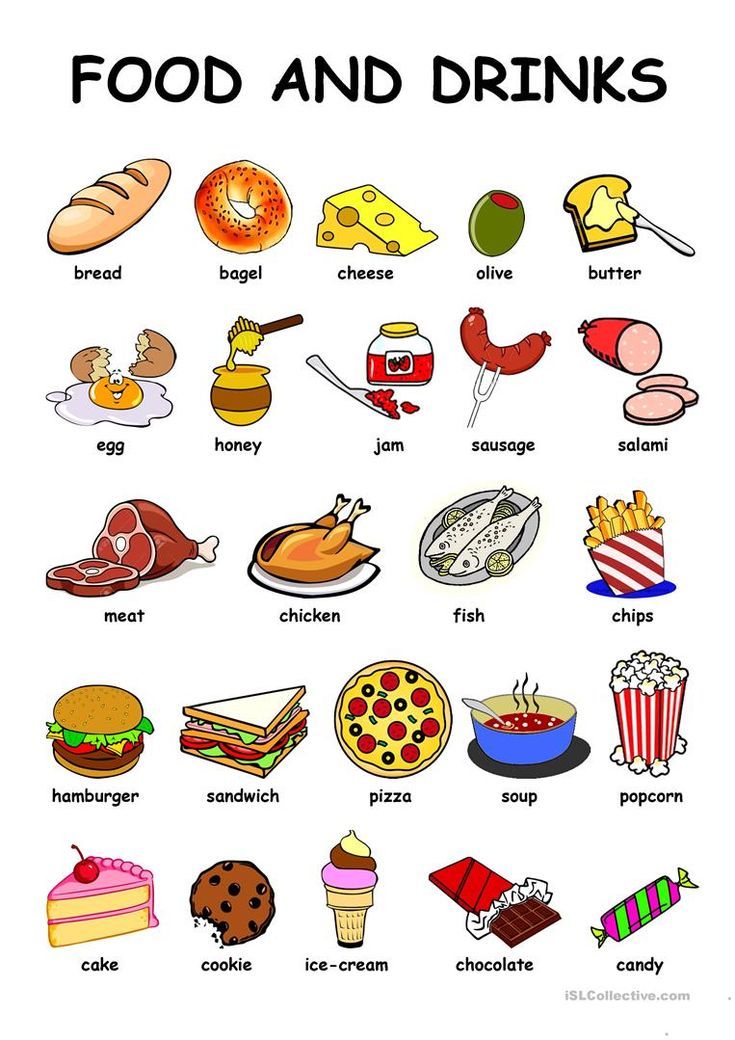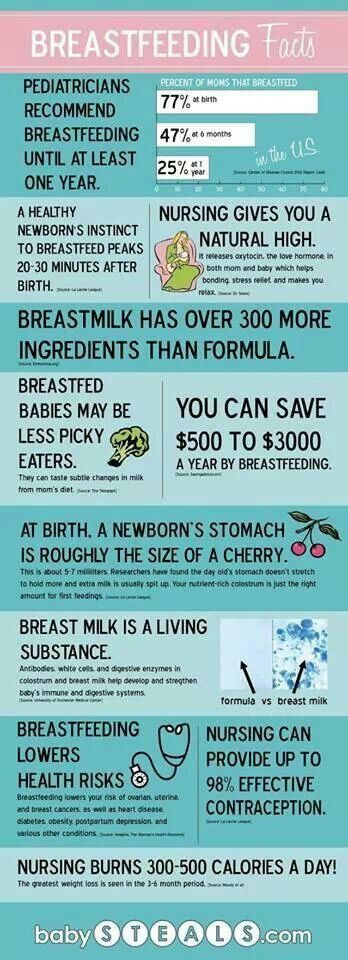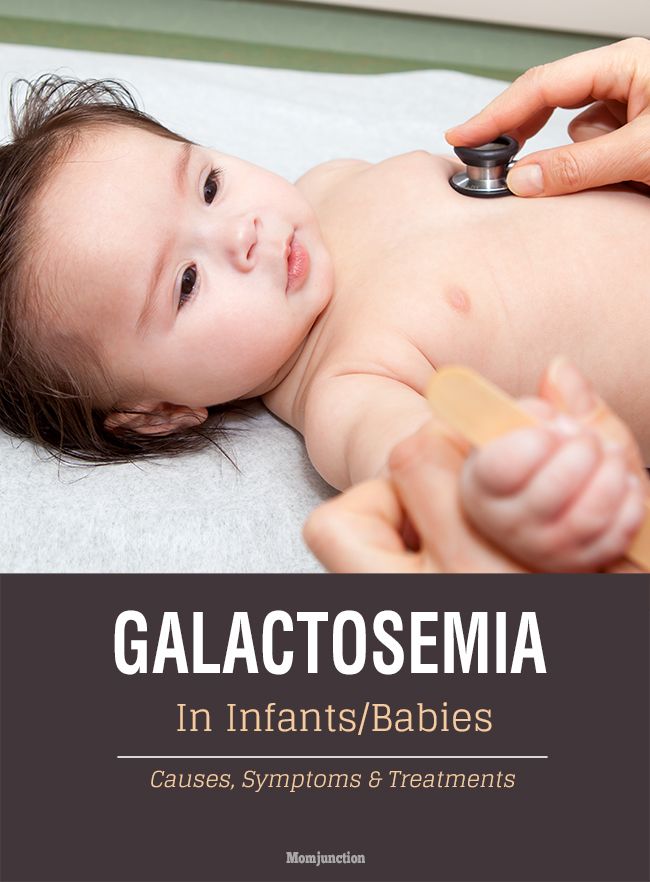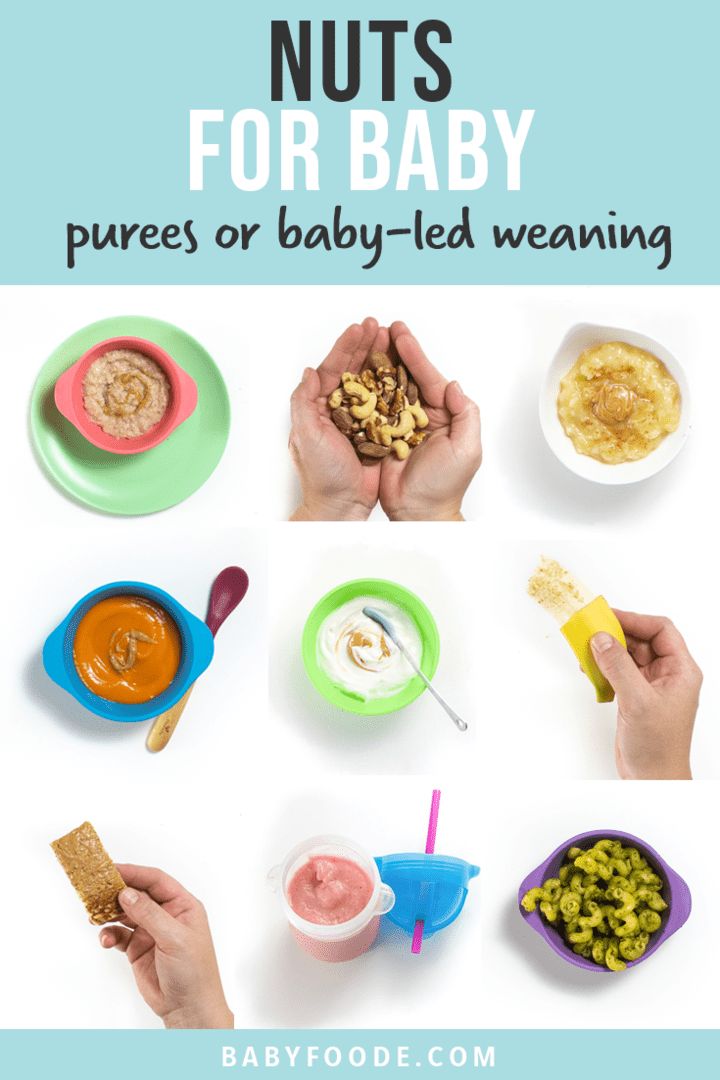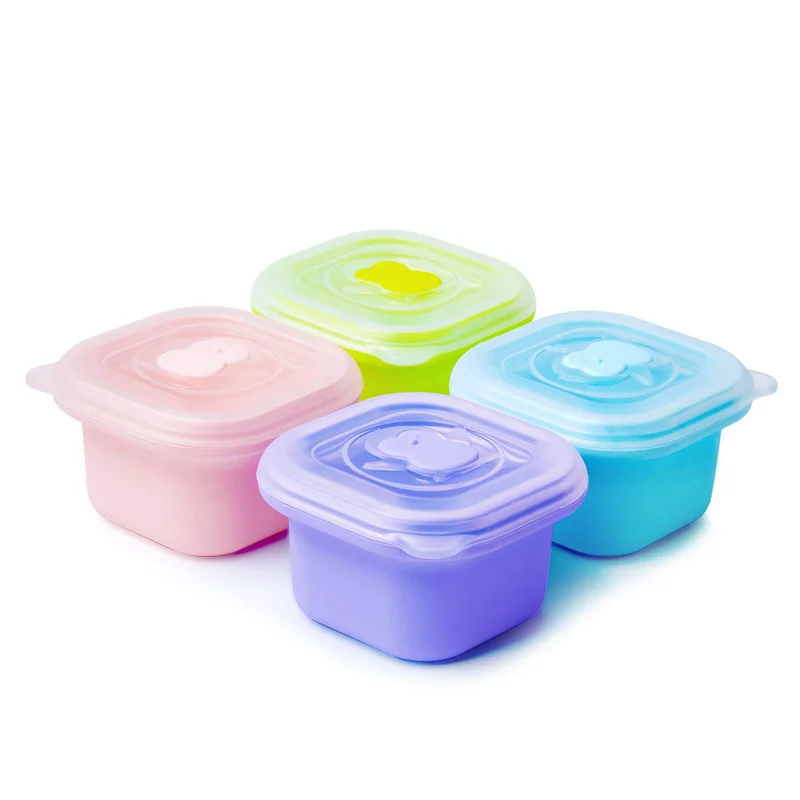What to look for in baby food allergies
Food allergies in babies and young children
Allergies and breastfeeding or formula feeding
Exclusive breastfeeding or first infant formula is recommended for around the first 6 months of life.
If your baby has a cows' milk allergy and is not being breastfed, talk to your GP about what type of formula to give your baby.
If you're pregnant or breastfeeding, you do not need to avoid foods that can trigger allergic reactions (including peanuts), unless you're allergic to them.
Introducing foods that could trigger allergy
When you start introducing solid foods to your baby from around 6 months old, introduce the foods that can trigger allergic reactions one at a time and in very small amounts so that you can spot any reaction.
If your baby already has an allergy, such as a diagnosed food allergy or eczema, or if you have a family history of food allergies, eczema, asthma or hay fever, you may need to be particularly careful when introducing foods. Talk to your GP or health visitor first.
Foods that can trigger an allergic reaction are:
- cows' milk
- eggs (eggs without a red lion stamp should not be eaten raw or lightly cooked)
- foods that contain gluten, including wheat, barley and rye
- nuts and peanuts (serve them crushed or ground)
- seeds (serve them crushed or ground)
- soya
- shellfish (do not serve raw or lightly cooked)
- fish
These foods can be introduced from around 6 months as part of your baby's diet, just like any other foods.
Once introduced and if tolerated, these foods should become part of your baby's usual diet to minimise the risk of allergy.
Evidence has shown that delaying the introduction of peanut and hen's eggs beyond 6 to 12 months may increase the risk of developing an allergy to these foods.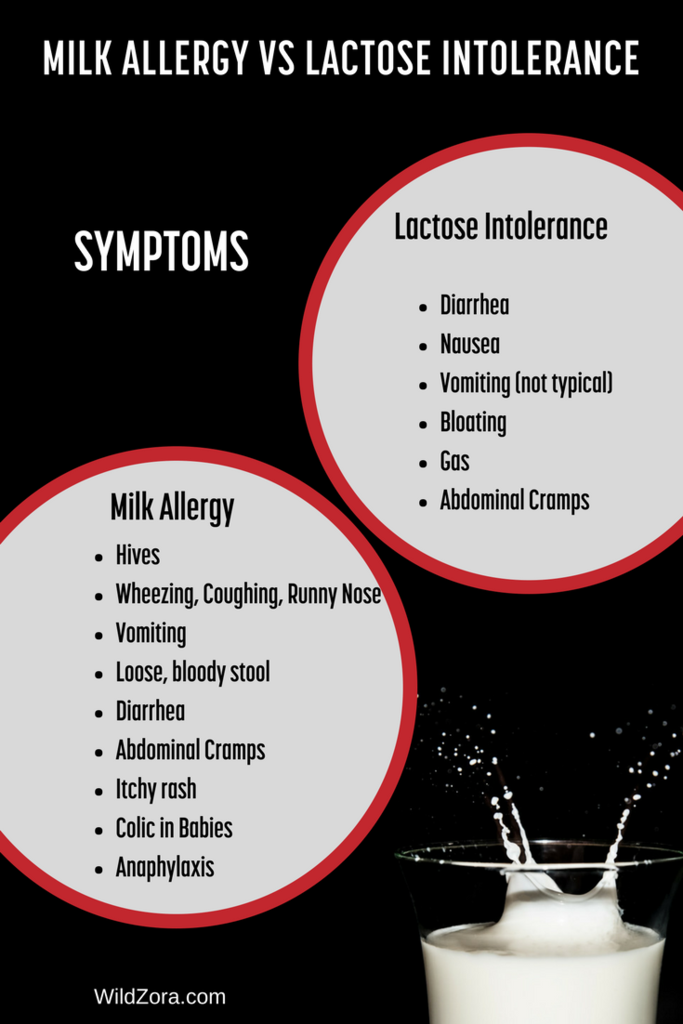
Lots of children outgrow their allergies to milk or eggs, but a peanut allergy is generally lifelong.
If your child has a food allergy, read food labels carefully. Avoid foods if you're not sure whether they contain the food your child is allergic to.
How to tell if your child has a food allergy
Allergic reactions usually happen quickly within a few minutes of exposure to an allergen.
They can cause:
- sneezing
- a runny or blocked nose
- red, itchy, watery eyes
- wheezing and coughing
- a red, itchy rash
- worsening of asthma or eczema symptoms
Most allergic reactions are mild, but occasionally a severe reaction called anaphylaxis or anaphylactic shock can occur.
This is a medical emergency and needs urgent treatment.
Do not be tempted to experiment by cutting out a major food, such as milk, because this could lead to your child not getting the nutrients they need.
Talk to your health visitor or GP, who may refer you to a registered dietitian.
Food additives and children
Food contains additives for many reasons, such as to preserve it, to help make it safe to eat for longer, and to give colour or texture.
All food additives go through strict safety testing before they can be used. Food labelling must clearly show additives in the list of ingredients, including their name or "E" number and their function, such as "colour" or "preservative".
A few people have adverse reactions to some food additives, like sulphites, but reactions to ordinary foods, such as milk or soya, are much more common.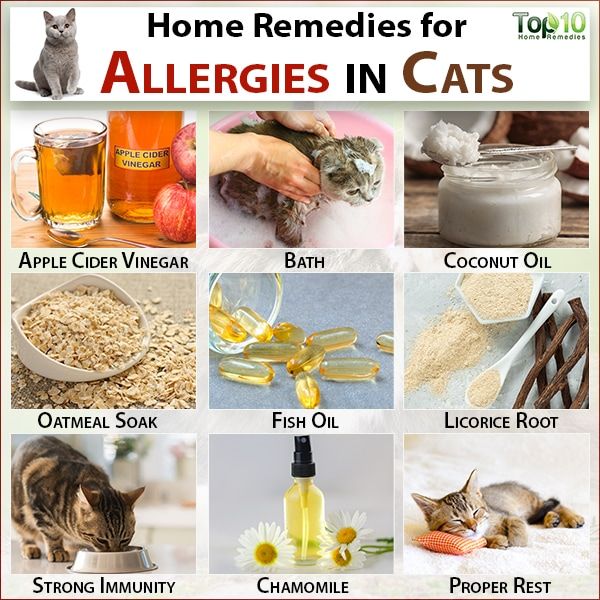
Further information
Find out more about:
- Foods to avoid giving babies and young children
- Food intolerance explained
- Food colours and hyperactivity
Page last reviewed: 5 November 2021
Next review due: 5 November 2024
Baby Food Allergies: Identifying and Preventing Them
Written by Gina Shaw
In this Article
- Start Gradually to Identify Any Food Allergies
- Babies and Allergies: The Top 8 Allergenic Foods
- Food Allergy Symptoms to Watch for in Your Baby
- Severe Food Allergy Symptoms: When to Call 911
- Dealing With Mild Food Allergies in Baby
- The Family Food-Allergy Connection
- Protecting Baby Against Food Allergies: Easy Does It
Starting to feed a baby solid foods is an exciting milestone for parents.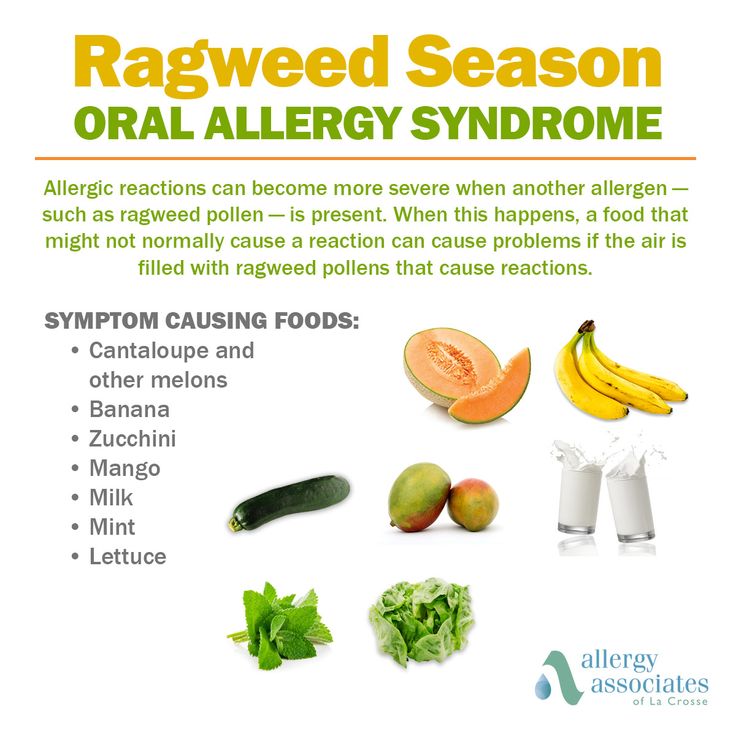 However, it comes with a lot of questions and concerns, especially about food allergies. What foods are most likely to cause allergies in babies? How do you avoid them?
However, it comes with a lot of questions and concerns, especially about food allergies. What foods are most likely to cause allergies in babies? How do you avoid them?
Emerging research has shown that introducing multiple foods together is safe, and may help the immune system have a lower risk of developing food allergies, but more studies are needed. Check with your doctor for what’s best for your baby.
Start Gradually to Identify Any Food Allergies
It’s most important to introduce a baby to new foods gradually, one at a time, in case of food allergies. If not, a parent may have trouble tying an allergy to a specific new food. For example, if you give your baby three new foods over the course of a day and they develop an allergic reaction, you won’t know which of the foods provoked it.
The type of food or the order in which food is introduced is not much of a concern, as long as the foods you are offering are healthy and well-balanced for the baby. Each time you offer a new food, you should wait three to five days before adding another new item to the menu.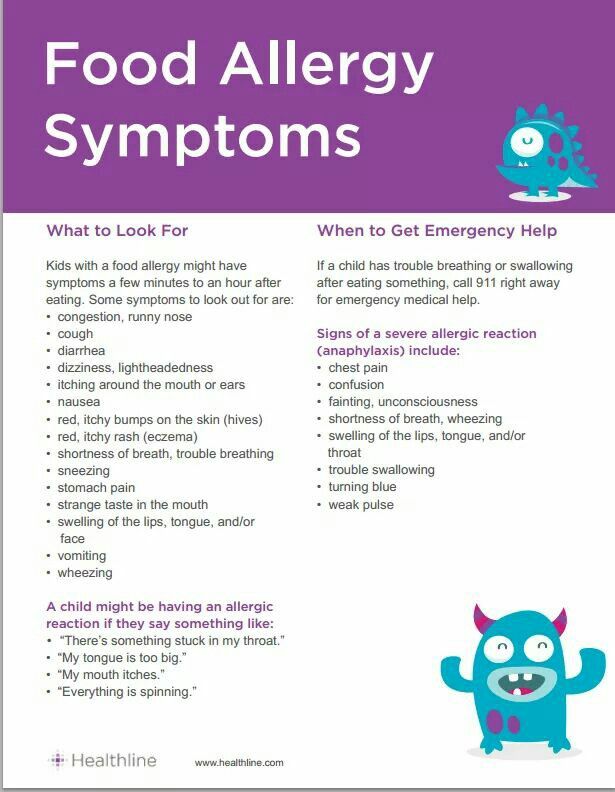 Don’t eliminate the other foods your baby is eating during that time; you already know these are safe because the child has not had any food reactions up until now. Just don’t add anything else new.
Don’t eliminate the other foods your baby is eating during that time; you already know these are safe because the child has not had any food reactions up until now. Just don’t add anything else new.
Babies and Allergies: The Top 8 Allergenic Foods
With any new food, you’ll want to be on the lookout for any allergic reactions. There are more than 160 allergenic foods; certain foods may be more allergenic than others. The following eight foods and food groups are known to possibly cause problems with allergic reactions possibly up to 90% of the time.
- Cow's milk
- Eggs
- Peanuts
- Tree nuts (such as walnuts or almonds)
- Fish
- Shellfish
- Soy
- Wheat
New nutrition guidelines from the American Academy of Pediatrics say it's okay to introduce these allergy-causing foods when your baby is ready to eat solids. There is no evidence that waiting until the baby is older prevents food allergy. If you believe your baby has an allergic reaction to a food, such as diarrhea, rash, or vomiting, talk with your child's doctor about the best choices for the diet.
Within a few months of starting solid foods, your baby's daily diet should include a variety of foods, such as breast milk, formula, or both; meats; cereal; vegetables; fruits; eggs; and fish.
Food Allergy Symptoms to Watch for in Your Baby
Food allergy symptoms usually appear very soon after the food is eaten -- within a few minutes to a couple of hours. If you’re introducing a new food to your baby, keep an eye out for these symptoms:
- Hives or welts
- Flushed skin or rash
- Face, tongue, or lip swelling
- Vomiting and/or diarrhea
- Coughing or wheezing
- Difficulty breathing
- Loss of consciousness
Severe Food Allergy Symptoms: When to Call 911
Severe allergic reactions can be fatal very quickly. If your baby is having trouble breathing/wheezing, has swelling on their face/lips, or develops severe vomiting or diarrhea after eating, immediately call 911. You can inform your pediatrician at a later time.
Dealing With Mild Food Allergies in Baby
If you see mild symptoms, such as hives or a rash, contact your pediatrician for further evaluation. The doctor might refer you to an allergist (allergy specialist doctor), who will ask more questions and do a physical exam. The allergies may order diagnostic tests such as:
- A skin test. This test involves placing liquid extracts of food allergens on your child's forearm or back, pricking the skin, and waiting to see if reddish raised spots form within 15 minutes. A positive test to a food only shows that your child might be sensitive to that food.
- Blood tests to check the blood for IgE antibodies to specific foods
Remember, just because a baby’s initial allergic reaction to a new food may be mild, it may get worse upon following exposures. Talk to your pediatrician about any food allergy symptoms in your baby.
Some allergies go away with time. Egg and milk allergies often go away as children get older, but peanut, tree nut, and shellfish allergies tend to persist. That said, research shows that in the case of peanut allergies, peanut immunotherapy drops administered under the tongue are safe and effective as treatment for peanut allergy, even in children as young as 1. They were also found to help significantly desensitize the patients to peanuts.
That said, research shows that in the case of peanut allergies, peanut immunotherapy drops administered under the tongue are safe and effective as treatment for peanut allergy, even in children as young as 1. They were also found to help significantly desensitize the patients to peanuts.
The Family Food-Allergy Connection
If there is a family food allergies, your baby has an increased risk of also developing allergies, although it is not a certainty. If you have the allergies, the odds are 50-50 for them to have them as well.
It’s best to introduce the 8 allergens gradually, at one-to-two week intervals over time so that you can recognize if an allergy develops.
Protecting Baby Against Food Allergies: Easy Does It
In a reversal of earlier policy, the American Academy of Pediatrics is now recommending that potential allergens be introduced to your infant earlier rather than later. In doing so, the move may actually help prevent them from developing allergies to those foods.
Breastfeeding you baby for 4-6 months is the best way to prevent a milk allergy. Remember that breast milk or formula is higher in nutrition. When you begin to introduce whole milk, you should do so under a doctor’s supervision. Yogurt and soft cheeses are fine, because the proteins in these dairy products are broken down and less likely to cause tummy trouble.
The AAP now advises that, in the case of infants who are at high risk of allergies, peanuts should be introduced between 4-6 months. Infants at highest risk of developing peanut allergies are those with eczema or egg allergies or both. It was originally believed that introducing your baby to the foods when they are older might make any reactions more manageable.
Other potential allergens such as tree nuts and fish should be introduced over a period of time as you introduce your baby to solid foods, between 6 and 9 months
You should wait until at least age 1 (some experts say age 2) to introduce honey, which can cause a potentially serious disease called infant botulism. Ask your pediatrician for guidance.
Ask your pediatrician for guidance.
Allergy to baby food in a child: nutrition for infants with allergies
Published: 03/16/2017
Reading time: 4 min.
Number of reads: 35256
Author of the article: Ponomareva Yulia Vladimirovna
Pediatrician, Candidate of Medical Sciences, Allergist-Immunologist
Food allergy is one of the most common health problems in a baby in the first year of life. According to statistics, every third child of this age has manifestations of food intolerance. Many parents are concerned about the question of what this condition is connected with and whether it is possible to avoid the development of an allergy to baby food in a baby.
Content: Hide
- State of the art
- Food allergy
- Major allergens
- Prevention is easier than cure
- Transition period
- Where to start?
- Complementary cereals in the diet of allergy sufferers
- Benefits of industrial baby food
Current state of the problem
In developed countries, there is a steady increase in allergic diseases every year, not only among children, but also among adults. There is no definitive answer about the reason for the increase in the incidence rate, but the role of factors such as living in large metropolitan areas, the distance of a person from nature, and a decrease in infectious load at an early age is being discussed. The immune system of the child, not receiving infectious stimuli, begins to respond to factors that normally do not cause any reactions - food, pollen or pet hair. In most babies at an early age, allergy manifestations are associated with food intolerance. Typically onset is in children over 3 months of age, with peak incidence at 5–9months. Often the first symptoms are associated with the start of the introduction of complementary foods.
There is no definitive answer about the reason for the increase in the incidence rate, but the role of factors such as living in large metropolitan areas, the distance of a person from nature, and a decrease in infectious load at an early age is being discussed. The immune system of the child, not receiving infectious stimuli, begins to respond to factors that normally do not cause any reactions - food, pollen or pet hair. In most babies at an early age, allergy manifestations are associated with food intolerance. Typically onset is in children over 3 months of age, with peak incidence at 5–9months. Often the first symptoms are associated with the start of the introduction of complementary foods.
Food allergies
Why do babies have so many food allergies? In addition to hereditary predisposition to allergic diseases, the immaturity of the digestive system, early cessation of breastfeeding, and disturbances in the intestinal microbiota play an important role.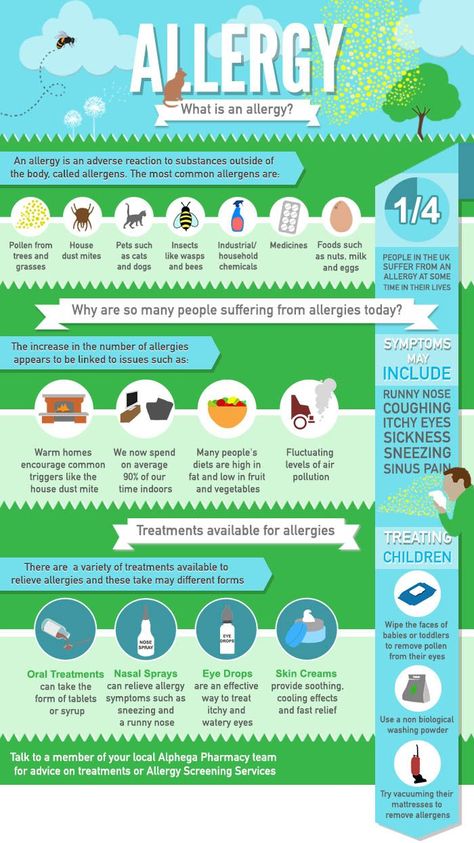 The introduction of foods with a high allergenic potential into the diet, as a rule, gives rise to the first manifestations of allergies. It is not difficult to diagnose this condition, typical manifestations are itchy skin rashes and disorders of the gastrointestinal tract. Often there is a causal relationship between rashes and the use of a particular product. Allergy symptoms cause anxiety to the baby, disrupt his sleep and quality of life. And the lack of adequate timely treatment increases the risk of further development of respiratory diseases such as allergic rhinitis and bronchial asthma.
The introduction of foods with a high allergenic potential into the diet, as a rule, gives rise to the first manifestations of allergies. It is not difficult to diagnose this condition, typical manifestations are itchy skin rashes and disorders of the gastrointestinal tract. Often there is a causal relationship between rashes and the use of a particular product. Allergy symptoms cause anxiety to the baby, disrupt his sleep and quality of life. And the lack of adequate timely treatment increases the risk of further development of respiratory diseases such as allergic rhinitis and bronchial asthma.
Major allergens
Almost any food can cause an allergic reaction, but in 90% of cases only a few allergens are responsible for this condition: cow's milk, chicken eggs, wheat, fish and seafood, soy, tree nuts (peanuts are the most common among them). ). Heat treatment does not lead to a decrease in allergenicity, therefore the most effective method of treatment is to completely eliminate the causative product from the baby's diet. Allergy to several products at once occurs quite rarely, but you need to be aware of the possibility of cross-reactions. So, a baby with an allergy to cow's milk protein has a high risk of reactions to the milk of other mammals and beef, with intolerance to a chicken egg, a reaction to chicken meat is likely, and intolerance to other gluten-containing cereals is possible with a reaction to wheat protein. Cow's milk protein is the most common cause of food allergies, so mothers should follow a strict dairy-free diet if their child develops an intolerance. If the baby is bottle-fed, special therapeutic mixtures are recommended in the diet, which are based on the most split milk protein. In addition to the exclusion of dairy products, the timing of the introduction of other strong food allergens - chicken eggs and fish, is being postponed, these products are used in the menu of children older than a year.
Allergy to several products at once occurs quite rarely, but you need to be aware of the possibility of cross-reactions. So, a baby with an allergy to cow's milk protein has a high risk of reactions to the milk of other mammals and beef, with intolerance to a chicken egg, a reaction to chicken meat is likely, and intolerance to other gluten-containing cereals is possible with a reaction to wheat protein. Cow's milk protein is the most common cause of food allergies, so mothers should follow a strict dairy-free diet if their child develops an intolerance. If the baby is bottle-fed, special therapeutic mixtures are recommended in the diet, which are based on the most split milk protein. In addition to the exclusion of dairy products, the timing of the introduction of other strong food allergens - chicken eggs and fish, is being postponed, these products are used in the menu of children older than a year.
Prevention is easier than cure
Is it possible to avoid developing allergies to baby food? Indeed, this disease is better to prevent than to cure. Of course, the presence of allergic diseases in the immediate family determines the risk of developing allergies in the child. Therefore, parents at the earliest stages should take care of the prevention of this condition. Modern experts do not recommend a special diet for mom during pregnancy. Her diet should be complete and varied as much as possible, in reasonable quantities she can eat various foods, including unconditional allergens. The baby, even in the womb, begins to get acquainted with the whole variety of food. Unnecessary use of antibiotics during pregnancy should be avoided and, when planning a mode of delivery, only cesarean delivery should be considered when absolutely necessary. These factors play an important role in disrupting the development of the gut microbiota, which in turn increases the risk of allergic reactions. Another key factor is early breastfeeding. If there is a need for artificial feeding or supplementary feeding to a baby at risk of developing allergies, nutrition should be organized on the basis of special preventive mixtures that a specialist can recommend.
Of course, the presence of allergic diseases in the immediate family determines the risk of developing allergies in the child. Therefore, parents at the earliest stages should take care of the prevention of this condition. Modern experts do not recommend a special diet for mom during pregnancy. Her diet should be complete and varied as much as possible, in reasonable quantities she can eat various foods, including unconditional allergens. The baby, even in the womb, begins to get acquainted with the whole variety of food. Unnecessary use of antibiotics during pregnancy should be avoided and, when planning a mode of delivery, only cesarean delivery should be considered when absolutely necessary. These factors play an important role in disrupting the development of the gut microbiota, which in turn increases the risk of allergic reactions. Another key factor is early breastfeeding. If there is a need for artificial feeding or supplementary feeding to a baby at risk of developing allergies, nutrition should be organized on the basis of special preventive mixtures that a specialist can recommend.
Transition period
The next most important step in the prevention of food allergies is the correct introduction of complementary foods. This is a crucial moment in the baby's life, since on the one hand it is necessary to introduce each product with caution, carefully monitoring possible reactions, and giving preference to low-allergenic products. On the other hand, it is wrong to delay the expansion of the diet. It is important to introduce all major food groups in as much variety as possible between 5 and 8 months. This is the corridor for the formation of an adequate response of the immune system to food products, when it is ready to recognize and accept food, which allows a person to eat these products in subsequent years without the risk of allergic reactions.
Where to start?
In infants at risk of developing food allergies, the general recommendations for starting food groups follow the standard approach. That is, complementary foods can be started with vegetables or cereals. Vegetable complementary foods would be preferable in a child with functional digestive disorders with a tendency to stool retention. Low-allergenic green and white vegetables such as squash, cauliflower, and broccoli are good choices. The first vegetable complementary foods should not contain salt, sugar and prepared without adding milk. In other cases, in children with food allergies or the risk of their occurrence, cereals are the best option for starting complementary foods. Why cereals? Under the conditions of compliance with a hypoallergenic diet by the mother and forced restrictions on the child's diet, cereals, as a source of essential nutrients, vitamins and minerals, significantly increase the nutritional, biological and energy value of the diet.
That is, complementary foods can be started with vegetables or cereals. Vegetable complementary foods would be preferable in a child with functional digestive disorders with a tendency to stool retention. Low-allergenic green and white vegetables such as squash, cauliflower, and broccoli are good choices. The first vegetable complementary foods should not contain salt, sugar and prepared without adding milk. In other cases, in children with food allergies or the risk of their occurrence, cereals are the best option for starting complementary foods. Why cereals? Under the conditions of compliance with a hypoallergenic diet by the mother and forced restrictions on the child's diet, cereals, as a source of essential nutrients, vitamins and minerals, significantly increase the nutritional, biological and energy value of the diet.
Complementary cereals in the diet of allergy sufferers
Can a child with an allergy or a predisposition to develop it have any porridge? Of course, not any. Dairy-free and gluten-free products are introduced as the first cereal food. Whole cow's milk, due to the high risk of food intolerance, is excluded from the diet of this group of children at least until the end of the first year of life. Accordingly, porridge is prepared on the basis of mother's milk, a specialized mixture or baby water without the addition of salt and sugar. Gluten-free cereals include buckwheat, rice and corn. How to cook porridge based on mother's milk in order to preserve all the valuable biological substances? Cooking is certainly detrimental to the protective antibodies, enzymes, hormones, and beneficial bacteria found in breast milk. Therefore, the best solution is to use commercially produced instant cereals for baby food. Mother's milk or a specialized formula can be heated in a water bath to 40 ° C, add the dry part in accordance with the manufacturer's recommendations and quickly get a ready-to-eat meal, preserving all the most valuable for the baby's health.
Dairy-free and gluten-free products are introduced as the first cereal food. Whole cow's milk, due to the high risk of food intolerance, is excluded from the diet of this group of children at least until the end of the first year of life. Accordingly, porridge is prepared on the basis of mother's milk, a specialized mixture or baby water without the addition of salt and sugar. Gluten-free cereals include buckwheat, rice and corn. How to cook porridge based on mother's milk in order to preserve all the valuable biological substances? Cooking is certainly detrimental to the protective antibodies, enzymes, hormones, and beneficial bacteria found in breast milk. Therefore, the best solution is to use commercially produced instant cereals for baby food. Mother's milk or a specialized formula can be heated in a water bath to 40 ° C, add the dry part in accordance with the manufacturer's recommendations and quickly get a ready-to-eat meal, preserving all the most valuable for the baby's health.
Benefits of industrial baby food
In addition to being quick and easy to prepare, modern industrial baby food meets high quality and environmental standards. The Bebi Premium product line "Porridges for the first feeding" is a good choice for babies with food allergies or a predisposition to them. It is preferable to start with a subgroup of low-allergenic cereals from this line. They fully comply with all the conditions for introducing cereal complementary foods to babies with food allergies. A distinctive feature of these products is an enriched composition, including prebiotics and the most important vitamins and minerals for this age. Prebiotics support the gut's own microbiota, which play a significant role in causing allergies. By the 6th month of life, vitamins and minerals are already supplied in insufficient quantities with mother's milk, especially in the conditions of the mother's hypoallergenic diet, so their guaranteed intake with complementary foods is a reliable prevention of deficient conditions in the baby.
#Nutrition for allergies
Rate the article
(Number of votes: 22, average 4.5)
Share with friends:
Food allergies in children - symptoms, treatments, diet its individual components. What are its causes, what are the risk factors, and what food to choose in case of an allergic reaction - read in this material.
Food allergy symptoms
The causes of food intolerance are due to the fact that the immune system “incorrectly” recognizes them as potentially dangerous, and produces protective antibodies in excess. Excessively violent reaction leads to the fact that the child develops an allergy to certain types of food. 1.3
Symptoms of food allergy in children are different. But most often, food allergies manifest themselves on the part of the skin - itching, a feeling of tightness and dryness. Local swelling may occur on the skin, a rash (urticaria), redness, blisters may appear. In second place in terms of frequency of manifestation - reactions from the respiratory system. Runny nose, nasal congestion, sore throat, cough of varying intensity. Also, reactions from the organs of the gastrointestinal tract can indicate food allergies. A very young child begins to be disturbed by colic, dyspepsia, stool disorders from diarrhea to constipation. Older children complain of nausea, vomiting, abdominal pain, a feeling of scratching in the throat, behind the sternum.
Local swelling may occur on the skin, a rash (urticaria), redness, blisters may appear. In second place in terms of frequency of manifestation - reactions from the respiratory system. Runny nose, nasal congestion, sore throat, cough of varying intensity. Also, reactions from the organs of the gastrointestinal tract can indicate food allergies. A very young child begins to be disturbed by colic, dyspepsia, stool disorders from diarrhea to constipation. Older children complain of nausea, vomiting, abdominal pain, a feeling of scratching in the throat, behind the sternum.
Do not forget about the general symptoms of food allergies: the child becomes lethargic, capricious, sleeps poorly, does worse in school (or psycho-emotional development), is prone to daytime sleepiness. 2.3
Causes of food allergies
Newborns and young children, if predisposed, may suffer from allergies due to their physiological characteristics. The fact is that a child is born with an immature gastrointestinal tract, the intestinal walls are permeable to many substances, the enzyme system is still imperfect. Therefore, it is difficult for the body to cope with the digestion of proteins. The body seems to be in a state of constant "combat readiness" and the ingestion of even a small amount of allergens leads to a response from the immune system and the development of a violent allergic reaction. 1.2
Therefore, it is difficult for the body to cope with the digestion of proteins. The body seems to be in a state of constant "combat readiness" and the ingestion of even a small amount of allergens leads to a response from the immune system and the development of a violent allergic reaction. 1.2
In older children, many internal and external conditions become risk factors. For example, heredity - after all, if one of the child's parents suffered from an allergic disease, then with a high degree of probability the child will also be given a tendency to it. Unfavorable environmental factors influence - polluted atmosphere, car exhausts, lack of green plants in cities. Very often, a violation of the immune system in the form of an allergic reaction occurs in children with a labile, mobile psyche, with sharp transitions from friendliness and calmness to crying and back. Finally, bad habits, both in children and mothers during pregnancy, become an important factor. This is incorrectly introduced complementary foods and early introduction of potentially allergenic foods into the child's diet: citrus fruits, nuts, chocolate, berries, honey, and, of course, the habit of children to eat only something tasty (usually unhealthy; chocolate, carbonated drinks, fast food ) 2,3,4
List of products that provoke allergies
Due to the extreme individuality of the immune system, it is almost impossible to predict its reaction. However, there is a rough list of foods classified into groups depending on their allergenicity - that is, the ability to cause a sharp reaction from the immune system and allergy symptoms. It is important to remember that it is not necessary that any product from the first column will cause a reaction. Like any low allergenic product, in some cases, it can cause an overreaction to it. 2,3,4
However, there is a rough list of foods classified into groups depending on their allergenicity - that is, the ability to cause a sharp reaction from the immune system and allergy symptoms. It is important to remember that it is not necessary that any product from the first column will cause a reaction. Like any low allergenic product, in some cases, it can cause an overreaction to it. 2,3,4
Examples of the most typical exoallergens
| Highly allergenic products | Medium allergenic foods | Low Allergy Products | |
| all citrus fruits, strawberries, strawberries, raspberries, blackberries, pineapples. | peaches, cranberries, lingonberries, cherries, blueberries, black currants. | pears, gooseberries, dried apricots, plums, white currants, apples and pears. | |
carrots, tomatoes, bell peppers, radishes. | potatoes, beets, peppers, peas, corn. | broccoli, green peas, zucchini, squash, white and cauliflower, cucumbers, pumpkin. | |
| eggs, sausages and sausages, chicken, sea fish. | beef, rabbit, pork. | lamb. | |
| whole cow's milk, cheeses, yoghurts with additives. | fermented milk products. | ||
| wheat, rye. | buckwheat, oats, rice, peas, beans. | barley, millet. | |
| coffee, cocoa, chocolate, nuts, honey. | xylitol, fructose | ||
| mushrooms, carbonated drinks, packaged juices. | vegetable oil. |
Diagnosis established
The diagnosis of this allergy, as well as the search for the causes that caused it, requires a careful and serious approach on the part of parents. The younger the child, the easier it is to find foods that cause illness. For this, two conditions must be met.
For this, two conditions must be met.
The first thing is to put a child or mother on a hypoallergenic diet if she is breastfeeding - a detailed nutrition plan will be helped by an allergist together with a pediatrician. Please note that during an exacerbation, the diet will be extremely strict, the so-called elimination diet - aimed at removing the allergen and reaction products to it with the complete elimination of potential and cross allergens. The duration of such a diet is determined by the doctor. When the exacerbation fades, the diet gradually expands due to safe foods. 3.4
And the second is to start keeping a special food diary in which to record everything that was eaten and drunk by the child during the day, as well as what was prepared and how. At the first sign of an allergic reaction, suspicious foods should be eliminated one at a time (or from the mother's diet if the baby is breastfed). After elimination, within a few days, it is worth observing the reaction, if the manifestations of allergies decrease, then the product is really not suitable for the child - it should be avoided.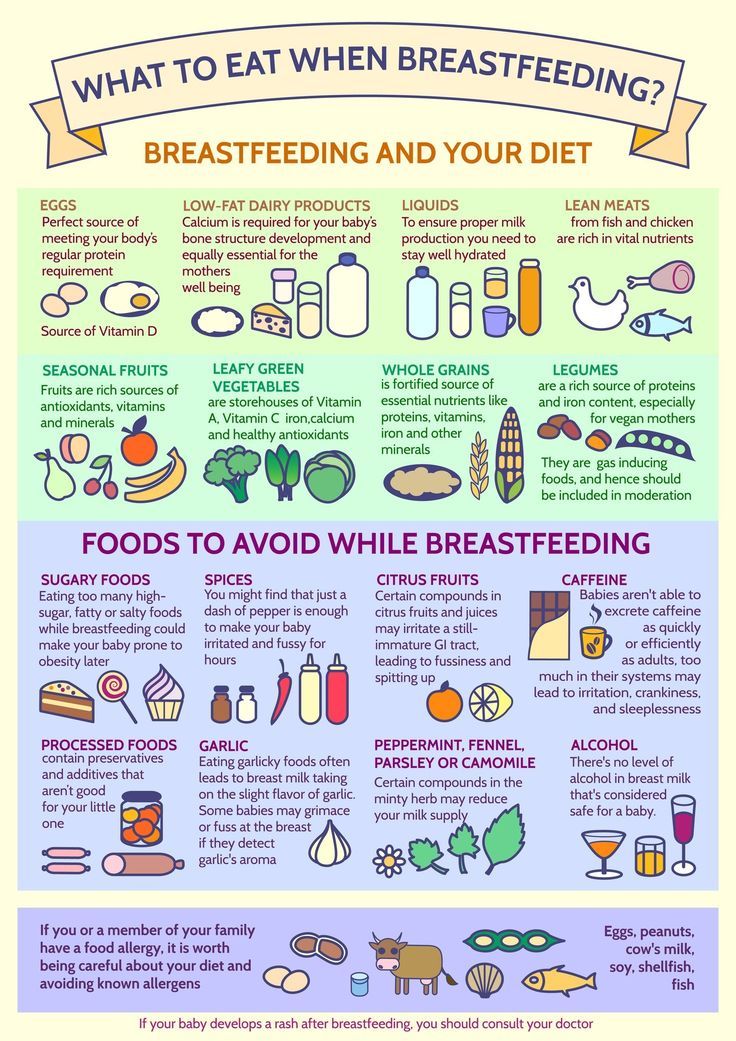 If the child is very small, then the diary is kept according to the opposite principle: all foods that are introduced as complementary foods are recorded in it. The name of the product, the quantity, the time of eating and the reactions of the body are recorded over the next few days (the attending physician will determine the specific timing of observation). Next, the doctor will need to check and confirm the preliminary diagnosis by conducting special tests and analyzes.
If the child is very small, then the diary is kept according to the opposite principle: all foods that are introduced as complementary foods are recorded in it. The name of the product, the quantity, the time of eating and the reactions of the body are recorded over the next few days (the attending physician will determine the specific timing of observation). Next, the doctor will need to check and confirm the preliminary diagnosis by conducting special tests and analyzes.
Emergency measures for food allergies
The first step is to assess the severity of food allergies.
For any symptoms, contact with a specific familiar allergen or any suspicious food or drink should be avoided first.
If the symptoms of allergy are mild - itching, redness of the skin, then you can give the child an antihistamine, which was previously recommended by the doctor for such cases. In addition, you must also call the local pediatrician and carefully monitor the condition of the child.



